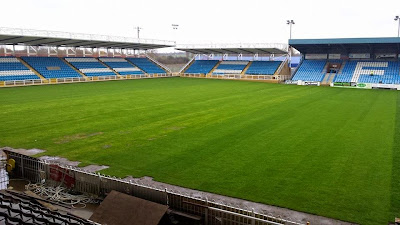The role of the coach in Rugby League has changed radically over the years. Nowadays the coach is considered to be perhaps the most important figure at a club, which is a far cry from the time when teams were chosen by selection committee, tactics decided by senior players and the coach was limited to overseeing a few laps of the training ground to keep the lads fit. Of course, even in those days, the best coaches did much more than that. Witness Eric Batten’s impact on Featherstone Rovers after his arrival in 1951 for proof of that. The job of a coach gradually evolved to its current status through the sixties and seventies with the emergence of “personality” coaches such as Alex Murphy and our own Peter Fox who insisted on having control over team selection. Coaching in Britain took a great leap forward after the 1982 Kangaroo tourists destroyed Great Briatin and an influx of influential antipodeans made their mark. Before then however, sterling work had been done in England by the National Coaching Scheme to raise coaching standards throughout the game. This initiative was set up by secretary general of the RFL Bill Fallowfield in the early 1950s and the two men he chose to head up this new coaching scheme both inevitably had strong Featherstone connections.
 |
| Laurie Gant MBE in his playing days |
Both Laurie Gant and Albert Fearnley served Featherstone as players and coaches. Laurie Gant, who sadly passed away late last year, served Featherstone Rovers and rugby league in general in every possible way. He started out as a player for Wakefield and signed for Rovers in 1948, making his debut on. After playing 112 games and scoring 15 tries, he had a short spell at Hunslet before retiring. The highlight of his playing career was of course packing down in the second-row at Wembley in 1952. He then became involved in coaching, and also spent many years as a top-grade referee. As well as his work with the whistle and on the coaching field, he then became Rovers head coach in 1966. Within a year Laurie Gant had led Rovers to a Wembley triumph, our first ever. He stepped down in 1970 and was replaced by Peter Fox. Laurie carried on with his work at the RFL, running coaching clinics and summer courses for thousands of schoolkids to encourage them to take up the game. Later in life he was chairman of the Rovers Past Players Association. He was one of only two Featherstone players awarded an MBE for his services to sport.
Laurie Gant’s right-hand man in the RFL coaching department was the indomitable Albert Fearnley. He had a distinguished playing career at Halifax, and gained a wealth of experience having played in Championship and Cup finals, including the most famous of all, the 1954 Cup final replay at Odsal. After playing at Wembley in 1956, he arrived at Post Office Road with a bagful of medals, to beef up the Rovers pack. A quick look at Featherstone teamsheet of the day, including Kenny Welburn, Willis Fawley, Norman Hockley, Wyn Jones and Cliff Lambert, might make you wonder quite why anybody felt they needed “beefing up”. He did just that though for two years, playing 67 games and managing a notable 18 tries. He had a short spell as unofficial forwards-coach in his second season, before moving on to Batley as their player-coach. More than one young Rovers forward of the day could tell the tale of how Fearnley’s uncompromising style opened their eyes as to just how tough you had to be to play the game then. It’s probably fair to say that Albert’s robust approach to playing was reflected in his coaching methods, but there can be no doubt he got his message across.
The game has changed in many ways since then, and today’s coach needs a host of skills as a teacher, a motivator, a tactician, a psychologist, a trainer and a public relations officer, as well as overseeing those laps of the training ground.











